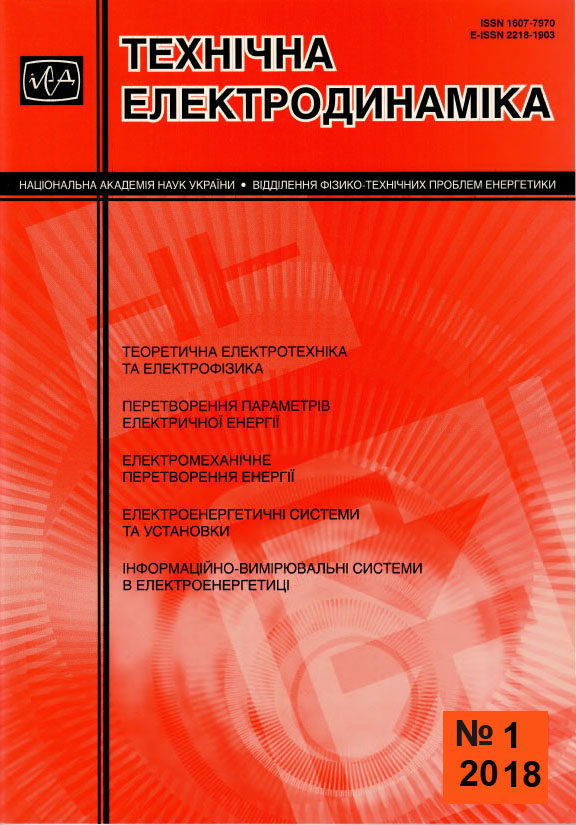Анотація
Розглянуто питання використання даних довготривалої передісторії для підвищення точності результатів короткострокового прогнозування сумарного електричного навантаження (СЕН) електроенергетичної сис-теми (ЕЕС). Виділено інтервали часу на річному періоді, що відповідають різному характеру впливу темпера-тури повітря на електричне навантаження. Запропоновано підхід до моделювання СЕН ЕЕС, який передбачає побудову групи незалежних математичних моделей електричного навантаження на виділених часових інтер-валах із використанням багаторічних даних, що сприяє підвищенню точності моделювання впливу зовнішніх факторів на електричне навантаження енергосистеми. Наведено підхід до моделювання і прогнозування електричного навантаження нерегулярних днів за даними довготривалої передісторії. Бібл. 8, рис. 3, табл. 2.
Посилання
Kotsar О.V., Rasko Yu.О., Halabitskyi P. Increasing the reliability of forecasting the load of end-users in the BSMBM. Enerhetyka: ekonomika, tekhnolohii, ekolohiia. 2015. No 2(40). Pp. 43–52. (Ukr)
Makoklyiev B., Antonov A., Ushchapovskii K.V., Grabchak R.V. Forecasting the electric load of united power system of Ukraine. Elektricheskie seti i sistemy. 2010. No 4. Pp. 4–12. (Rus)
Chernenko P. Identification of parameters, modeling and multi-level interconnected forecasting of electrical loads of the united power system. Tekhnichna Elektrodynamika. Tematychnyi vypusk Problemy suchasnoi elektrotekhniky. 2010. Vol. 3. Pp. 57–64. (Rus)
Chernenko P.O., Martyniuk O.V., Zaslavsky A.I., Denesivich K.B. Improving the efficiency of planning united power system using the program complex of medium-term forecasting. Elektricheskie seti i sistemy. 2009. No 5. Pp. 21–35. (Rus)
Farmer E.D., Potton M.J. Development of on-line load prediction techniques with results from trials in the south-western region of the CFGB. Proc. IEE. 1968. Vol. 115. Pp. 1549–1558.
Galiana F., Handshin E., Fiechter A. Identification of stochastic electric load models from physical data. IEEE Trans. AC. 1974. Vol. 19. No 6. Pp. 887–893.
Gupta P.C., Yamada K. Adaptive short – term forecasting of hourly loads using weather information. IEEE Trans. Power Appar. and Syst. 1972. Vol. 91. No 5. Pp. 2085–2094.
Protasiewicz J. and Czczepaniak P.S. Neural Models of Demands for Electricity. Prediction and Risk Assessment. Electrical Review. 2012. Vol. 88. No 6. Pp. 272–279.

Ця робота ліцензується відповідно до Creative Commons Attribution-NonCommercial-NoDerivatives 4.0 International License.
Авторське право (c) 2022 ТЕХНІЧНА ЕЛЕКТРОДИНАМІКА

